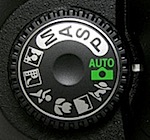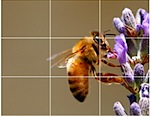By far SAHM (Stay At Home Moms) have taken the blogging community by storm. According to Williamson (2010), the number of moms who blog is 32 million in the US alone. It is speculated that daily, more new blogs are created by aspiring moms than any other specialty group. It would appear that SAHM bloggers have plenty of support for their fledgling blogs via social networking sites such as Bloggy Moms, The Blog Frog, SocialMoms, The MomBlogs, and Moms Buzz. With so many moms blogging what is the best way to insure unique content?
Written by Mom
Pregnancy is a common starting point for enterprising mommy bloggers. Blogs written by first time child-bearers chronicling the woes of pregnancy that mature into blogs covering the joys of parenting abound. From there, where does the new mom go for fresh content? After all, there are only so many first time mom stories of interest to go around.
Moms, especially stay at home mommas, can turn to their hobbies for blog content. A clever crafting mom can potentially earn money by selling her wares VIA Etsy, a site devoted to buying and selling vintage and handmade items. Bloggers share crafting ideas and projects while connecting with other crafters and would-be crafting moms. The same can be said for culinary geniuses who rule kitchens. Moms who share recipe flops and successes add interesting content while mentoring the rest of us who may not be as familiar with various kitchen appliances and gadgets.
Many blogging moms are turning to give-a-ways to build a successful blog. A word of caution for the give-a-way moms, focusing totally on give-a-ways without any other content may deter faithful followers. It is difficult to write an interesting and informative post built solely around give-a-way items. Give-a-way bloggers can strengthen their content by writing product reviews for many of the items they are giving-a-way.
Momma’s Mad Money
When it comes to making money with a blog, ambitious blogging matriarchs will need to monetize and it is best done with a strategy. Whether using affiliate marketing or Google Ad Sense, mom bloggers seeking to earn money need to develop goals along with a strategy. For instance, if a mom blogger plans to earn say $2000 per month VIA her blog, she will need to hone her content by understanding her readers and then select the monetization vehicle that best matches her blog. Amazon affiliate marketing is a great tool and may actually be the best tool for moms who write product reviews and host give-a-ways on their blogs. Google Ad Sense works for any blog. Google ads are placed on blogs and bloggers generally earn money based on several different factors such as click rates and click through.
Networking Chica
Unfortunately, blogging does not operate on the “build it and they will come” principal. The successful mom blogger will spend a considerable amount of time networking to build a following. The best way to achieve new followers is to visit other mom blogs, read some posts and leave comments. This will almost guarantee a new follower. This method of networking also helps mom bloggers to support each other, share tips, and other information related to blog growing.
What Are You Waiting For?
Moms and dads reading this, try your hand at blogging today. Blogging is a fun, creative and potentially lucrative way to share your knowledge, life experiences and to network with others. Follow the lead of the many mommy bloggers already filling the internet with their talents, hopes, dreams, and the often-hilarious ups and downs of raising a family while making money. Start writing today!
Sources
- Williamson, D.A., Moms who blog a marketing powerhouse, (2010)
This article first publised @ http://www.suite101.com/content/moms-taking-blogging-by-storm-a377653



















